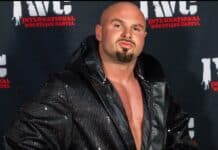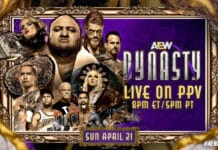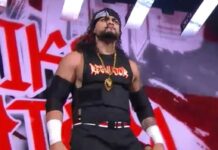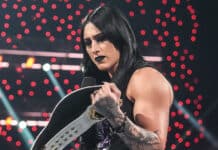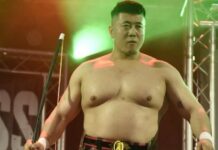With another weekend ahead of nearly everything shut down and stay at home orders still in place, I hope you will enjoy the next installment of the Wrestlemania challenge, the series where I will write an article each day about WM in chronological order with some interesting notes about each as we go along. I’m not religious but I hope (and pray) that by the time I get through the entire run of WM events that the shutdown will be lifted and we can all go back to buying toilet paper in normal quantities. In many ways, Wrestlemania III was the peak of the boom in popularity of the 80s, as the previous two years built to it and then the two years that followed more or less rode the wave of momentum of the era. Ironically, the same could be said for the surge of the 90s, but that literally is another article for another time. While the attendance has been disputed over the years, the Pontiac Silver Dome was undoubtedly packed and the opening shot of the show is an incredible visual. As Wrestlemania itself became more of a marquee event, little by little, more attention started to be paid to the under card with more depth than the previous two versions. However, some of the same pattern is here because the first several matches were kept extremely short with the cart ride to the ring in the massive venue almost as long as the bell-to-belt action.
Tito is back with Tom Zenk for a decent tag match against Muraco and Bob Orton. Tom Zenk is a curious case in pro wrestling because the guy seemed to have some potential at various points in his career, including later on when he teamed with Brian Pillman in WCW, but Zenk never really stayed anywhere long enough to truly establish himself as more than just a mid-card wrestler or part of a tag team. His four-year stint in WCW in the early-90s was interrupted by an injury in the middle of that run and he basically disappeared from the main wrestling scene after that. Billy Jack Haynes vs. Hercules was nothing great and if you’re watching on the WWE Network, you might opt to skip this one. The six man tag of Hillbilly Jim, Haiti Kid, and Little Beaver (make your own immature joke here) vs. King Kong Bundy, Little Tokyo, and Lord Littlebrook is another one you could skip if it wasn’t so ridiculous. The match is clunky, clumsy, and Bundy’s fall from grace that saw him demoted from the main event last year to this cluster is embarrassing to watch. On the flip side, “King” Harley Race vs. Junkyard Dog was a gimmick match done right. A pro for nearly thirty years at that point, Harley was in the twilight of his career and would actually hung up his boots less than three years after this so it made sense to put him in a rather easy match where JYD would work light and get the most out of minimal bumps for Harley. Again, as basic as it was, it worked and provided a few minutes of entertainment, which is the most you could ask for from it. With as legitimately tough and as accomplished as Harley was, he saw the direction of the industry and knew he could get top money for a few years in the WWF before he retired as an in-ring wrestler.
The Rougeau Brothers vs. The Dream Team was a decent match, but nothing too memorable. In the years that followed this bout, Brutus Beefcake would infamously switch gimmicks more often than the WCW title switched when Russo was booking, and basically kept a job for the next 15 years because he was friends with Hulk Hogan. On the other hand, Greg Valentine fizzled out of the national scene just a few years after WM 3 with brief appearances in WCW, but even more appearances at independent shows desperately trying to sell photo-ops and 8×10 pictures with as much cheer as a retail worker during the shopping season. I always thought The Rougeau Brothers could’ve or should’ve had a bigger run in the WWF. They worked well with the other teams in the division and had solid matches, but never seemed to reach the level of the Bulldogs or The Hart Foundation. Later on, Ray Rougeau worked as a French commentator for the company, a role he started again in recent years. Jacques became known as the guy who KO’ed Dynamite Kid after the British grappler sucker punched him a few weeks earlier, and of course The Mountie, which lead to spinoffs of the character in both the WWF and WCW in the 90s.
The card picks up to some of the main bouts with a hair vs. hair match for Roddy Piper’s retirement match. As is often the case in sports entertainment, Roddy’s retirement was only long enough for him to film a few movies, including the cult classic, “They Live” before he eventually returned in time for Wrestlemania 5. This was the beginning of a pattern for Piper, as he would often take a break from wrestling to work on movies before he made an anticipated return. The occasional hiatus probably gave him more longevity, as far as his time as an in-ring wrestler. Sadly, Adrian Adonis, despite being one of the most underrated workers in the history of the sport, is terribly out of shape for this match. Known for taking tremendous bumps, Adonis’ weight ballooned to over 300 LBS around this time. Somehow, he could still move well and was very agile. Adonis is one of my favorite wrestlers to watch, but it’s just sad to see the physical shape he was in here. The actual match was a fun brawl with Jimmy Hart being bounced around a various times. More than anything, this match is a prime example of the audience response when a competitor is truly over with the crowd. Piper shows incredible baby face fire and his wild expressions have the fans behind him the entire time. In my opinion, Piper’s iconic jog to the ring was just a classic image and it fit his gritty style. In reality, the cart to take the athletes back and fourth to the ring malfunctioned so Piper ran to the ring to avoid the show being halted. Speaking of the Roddy one, I’ve been enduring this shut down and I’m all out of bubble gum…
Butch Reed, who would go on to form a tremendous team with Ron Simmons in WCW, beat Koko B. Ware in a basic match so there’s not much to say about it. There was a six man tag with Danny Davis and the Hart Foundation vs. The Bulldogs and Tito Santana. I don’t know if there’s an extensive list of great six man tags, but this was decent for what it was. Jake “The Snake” Roberts vs. Honky Tonk Man is a basic, but solid bout. In many opinion, HTM is purely a gimmick and didn’t really bring anything to the table other than being an Elvis impersonator. Hey, if he got paid to do it, good for him, but how many classic HTM matches can you remember? How about all those money promos he cut? Jake, on the other hand, was in top form here and the addition of Alice Cooper in his corner made for cool pair at the show. Jake didn’t do many fancy moves, but everything he did was solid. Every punch and every expression had an impact on the narrative of the match.
Next up is the match that stole the show, the classic Ricky Steamboat vs. Randy Savage bout for the IC title. This is one of the most discussed matches in WM history and rightfully so, but as far as a discussion point here, I think the performances helped define the path of each athlete in the time that followed. This was another major stage where Macho proved he could go bell-to-bell and deliver the match of the night, which unquestionably raised his stock among WWF brass, proof of that would be seen next year. For Steamboat, who is probably the greatest baby face of all time, he might not have been flashy enough for the WWF main event scene, but his in-ring style suited the NWA perfectly. Without such a high profile bout at WM 3, would Steamboat have been put in the NWA title picture in 1989? Speaking of the Dragon, his career is very interesting because he basically alternated between the two groups throughout the course of his career and had different roles for each run.
The Iron Sheik and Nikolai Volkoff vs. The Killer Bees went to a DQ for what was only a match to pace the card ahead of the main event. Although, maybe this was the start of The Iron Sheik’s animosity toward Brian Blair?
The main event was all sizzle, but no wrestling substance and it didn’t matter at all. This was the bout that got 93,000 fans in the building and to the closed-circuit locations. Andre was physically deteriorated and it was sad to see how immobile he had become at that point. The stellar HBO documentary on his life explained in detail how much Andre was suffering with mobility problems before the match. As repetitive as it sounds, as far as moments, the face off of Andre and Hogan is the definition of sports entertainment. It was the wrestler that was presented as a hero against a literal giant for the championship. Hulk dropping the leg to win is basically the classic finish of the hero triumphing over the villain, which was the WWF model in that era. However, I think the build up to this clash and those around it sometimes gets overlooked because of the magnitude of the spectacle of the show. Bobby Hennan, the greatest manager of all time, had the ability to get the competitors he managed over, and in this scenario, he got Andre’s heel turn over to set up for this major event. The calculating Hennan persuaded Andre to turn against his former friend and challenge for the belt. Let’s not forget the setting of the confrontation was Piper’s Pit, and after Andre torn Hulk’s shirt, ripping his necklace in the process, Roddy’s “you’re bleeding” comment to Hogan just emphasized Andre’s betrayal of the champion. From a business perspective, Hogan vs. Andre is one of the most successful matches in Wrestlemania history.
What do you think? Comment below with your thoughts, opinions, feedback and anything else that was raised.
Until next week
-Jim LaMotta
E mail [email protected] | You can follow me on Twitter @jimlamotta

